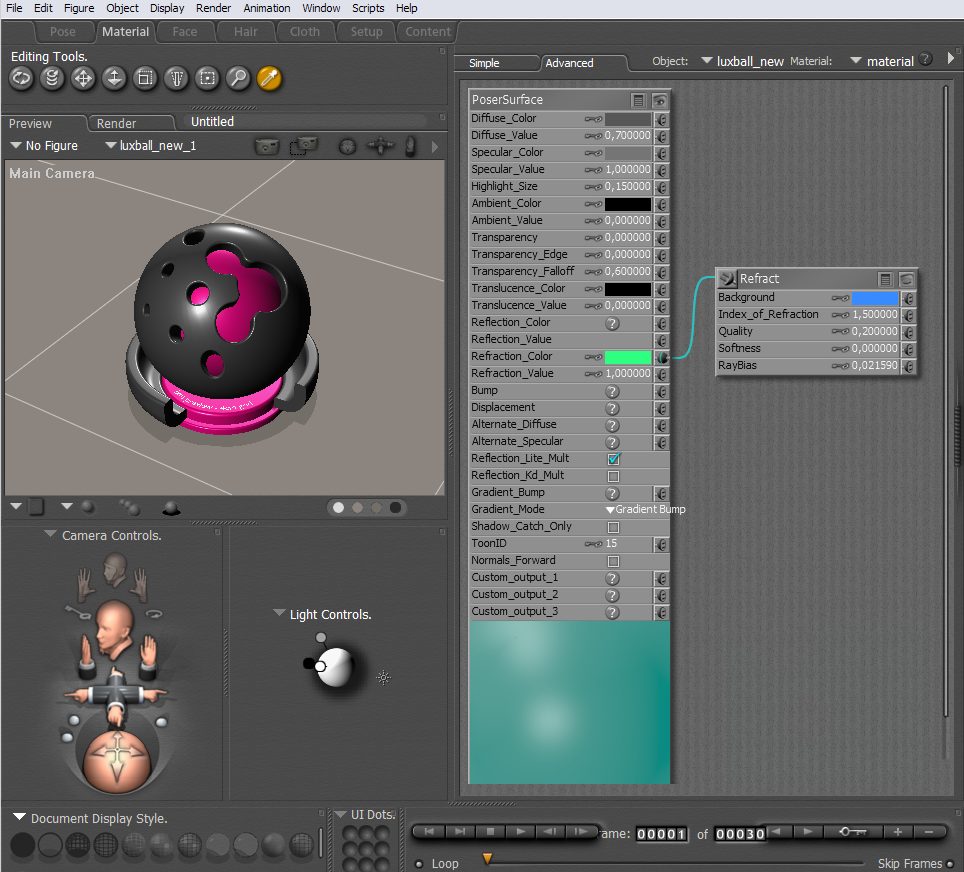
Khai-J-Bach opened this issue on Aug 27, 2010 · 1684 posts
adp001 posted Fri, 08 October 2010 at 4:41 AM

For me the material above computes to the following Lux file (important parts only):
#-----> luxball_new_1/material:glass <-----
MakeNamedMaterial "luxball_new_1/material:glass" "string type" ["glass"]
"string Kr" ["0.024222943199534778, 1.0, 0.22331043694287706"]
"color Kt" [0.215686276555 0.54509806633 1.0]
"float index" [1.5]
"float cauchyb" [0.20000000298]
"float filmindex" [0.850000023842]
######################
#-----> luxball_new_1/material:glass_1 <-----
MakeNamedMaterial "luxball_new_1/material:glass_1" "string type" ["glossy"]
"color Kd" [0.139313726983 0.139313726983 0.139313726983]
"color Ks" [0.0172058831287 0.0172058831287 0.0172058831287]
"float uroughness" [0.32760295434]
"float vroughness" [0.32760295434]
######################
#-----> luxball_new_1/material <-----
MakeNamedMaterial "luxball_new_1/material" "string type" ["mix"]
"string namedmaterial1" ["luxball_new_1/material:glass"]
"string namedmaterial2" ["luxball_new_1/material:glass_1"]
"float amount" [0.0]
As you can see, the "mix amount" is 0, because Refraction_Value is 1. So the glossy part is ignored.
The colors defined in Poser are assigned to the glass material as follows:
Poser Refraction_Color -> glass Kr
Poser Refraction Node Background -> glass Kt
Poser Refraction Node Index_of_Refraction -> glass index
Poser Refraction Node Quality -> glass couchyB
Poser Refraction Node Softness -> glass film
Poser Refraction Node Raybias -> glass filmindex